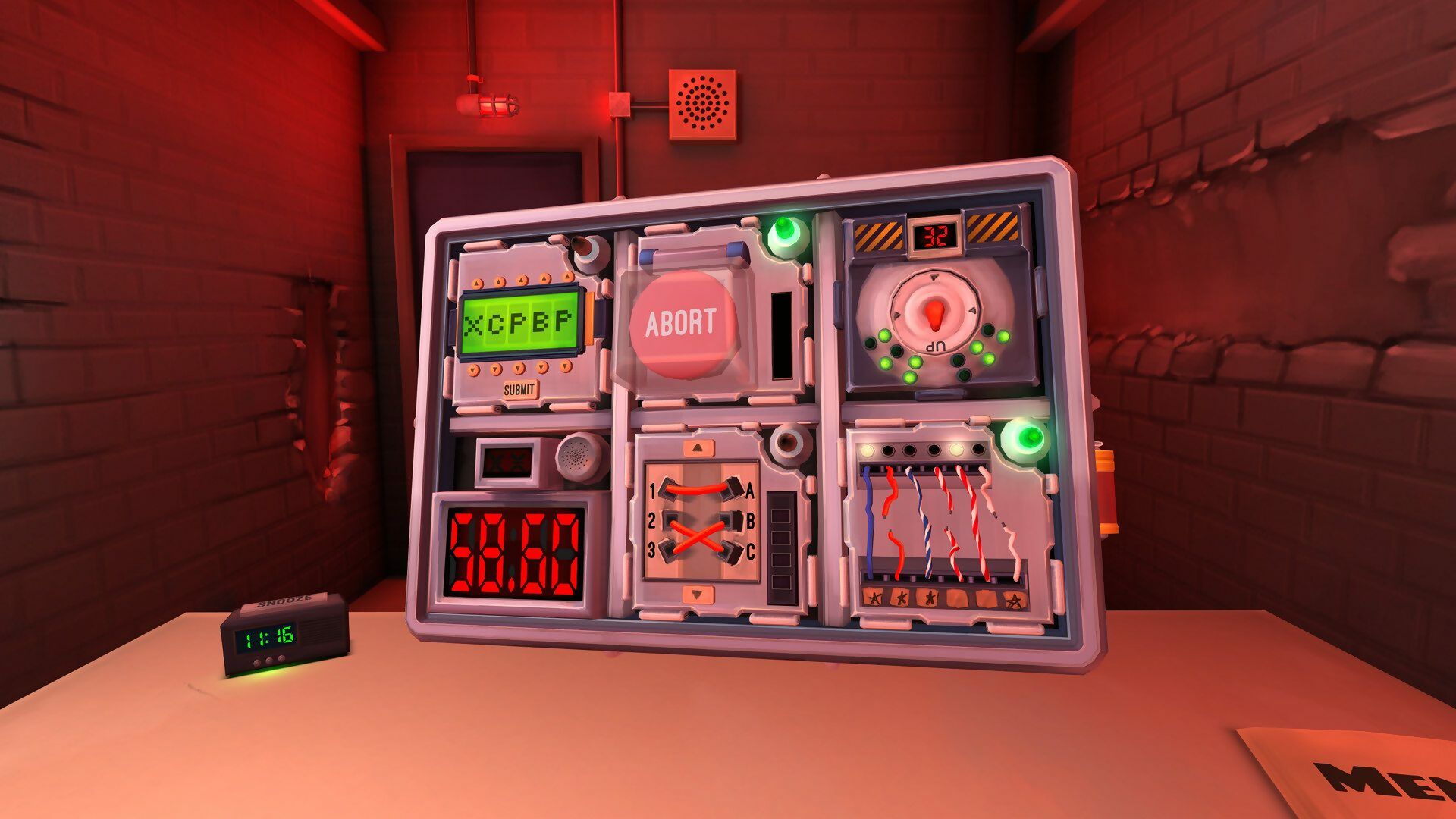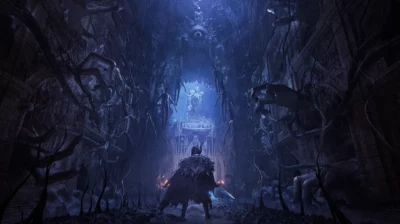
Puzzles are so ubiquitous in both video games and the real world that we lump a whole bunch of activities under that umbrella term. There are jigsaw puzzles, sudoku, and crossword puzzles, abstract games like Threes and Lumines, and point-and-click adventures whose gameplay revolves around solving puzzles, such as the Broken Sword series.
What links them all is that we can define puzzles as ‘challenges you solve by thinking about them’. Pure puzzles entirely come down to brain power, but hand/eye coordination and the influence of chance can also play a part. Coordination comes in because each of your turns in chess is a situation you can ‘solve’ by thinking, whereas Dr. Mario requires the ability to think through the options but then also be able to execute them quickly and accurately. Chance, on the other hand, represents elements outside of your control, no matter how smart you are, such as the exact Tetris piece you need appearing or not.
But while we call Tetris a puzzle game, it’s technically a ‘problem’ game. So what’s the difference?
PUZZLES VS PROBLEMS
Puzzles present a situation that someone has designed to have one or more specific solutions for you to figure out, and while you might come up with a clever way to abuse the game’s rules to circumvent a puzzle, that’s technically cheating.

Breath of the Wild’s use of physics allows players to ‘cheat’ unexpected solutions to puzzles. Though this approach works, it’s not what the designers intended.
A problem, on the other hand, is something designed to have any number of solutions – as long as it works, whatever you figure out to get through it is a valid approach. So, working out how to get past Baby Jimmy Hoffa in Sam & Max is a puzzle with only one solution, whereas bringing down an Angry Birds tower in the fewest shots is a problem with any number of solutions.
Of course, everyone shortcuts this by referring to both puzzles and problems as puzzles, but it’s important to understand the difference due to the intrinsic rewards that each offers (with intrinsic rewards being thoughts and feelings generated by the player when they complete a challenge, as opposed to extrinsic rewards like coins or progress that the game may hand out).
Puzzles involve the player taking on the designer in a head-to-head challenge and, as such, are considered ‘hard fun’. Are you smart enough to figure out the challenge in front of you? Can you beat the designer? Problems, meanwhile, are considered ‘easy fun’ because they revolve around the player versus themselves: ‘Sure, I can solve this problem in nine steps, but can I do it in five?’ Hard and easy fun attract different audiences (‘figure out the solution’ versus ‘do your best’), so consider who’s playing your game and whether they’re looking to pit their wits against you or have a chilled time trying out different approaches.

Infinifactory asks you to reach goals, but it’s up to you how you approach each problem – you’re not expected to figure out a preset solution.
TYPES OF PUZZLE
This isn’t a complete list, but here are some common puzzle types you might want to play with:
Riddles: Riddles in the ‘Bilbo versus Gollum’ sense are uncommon because they’re entirely language dependent – meaning they may not make sense to players outside your country – and because their answers can often be ambiguous. That said, Sea of Thieves uses them for its treasure map puzzles.
Spatial reasoning: Puzzles involving the game’s environment. For example, Superliminal revolves around positioning yourself and the in-game camera to align things just so, while The Talos Principle asks you to pick up and manipulate objects to cause lasers to hit specific targets.
Pattern recognition: Games where the challenge comes down to being able to spot and recognise elements. This may sound simple, but it includes the extremely popular match-3 and hidden object genres, along with games like solitaire.
Lateral thinking: These ask the player to come up with a solution by thinking ‘outside the box’. Perhaps the best example is Baba Is You, which lets you solve problems in any number of creative ways if you think laterally.
Logic: Games where you’re presented with all the information and have to figure out how it fits together. Picross is a great video game example, while Sherlock Holmes: Consulting Detective is a board game which revolves around this.
Exploration: These require the player to physically move around inside the game’s environment in order to spot clues and work out how everything fits together spatially. Examples include the Tomb Raider and Portal games.
Item use: Games that involve picking up items and working out what to use them on. Point-and-click adventures and escape rooms often come down to finding and using items to progress.
AFFORDANCES
Puzzles and problems are defined by their ‘affordances’ – a concept that games have inherited from the real world. An affordance is simply something that you are able to do in the current situation, with a common example being doors with pull handles (so you know you need to pull, not push it open). In the case of puzzles, affordances are the possible actions that players can make when trying to solve them. For example, if they can pick up objects, then being able to use objects to solve puzzles is an affordance they have, whereas if they can’t pick anything up, then that’s not even an option when it comes to solving a puzzle and the solution must be elsewhere.

Scribblenauts forces players to use lateral thinking to solve problems within the game’s rules, while Baba Is You lets you change them to your advantage.
As well as helping players understand what is or isn’t an option for solving puzzles, you can use your affordances to help generate those puzzles in the first place. Start with one of the affordances in your game and think of all the puzzles you can possibly make around it. Note that some of these ‘puzzles’ will be rubbish – you’re only listing potential options, not guaranteeing they’ll be worthwhile. Then add another affordance and see which new puzzles spill out from that, and so on until you run out of things that are possible in your game.
As an example, let’s say we have a game where objects are affected by gravity. Therefore ‘can solve puzzles using objects’ is an affordance the game has, as is ‘puzzles involving gravity’. Combining these means we can have puzzles where the player wants objects to fall, and puzzles where they have to make sure they don’t fall. Then we could add the affordance of players being able to control or even reverse gravity, potentially giving a lot more puzzles. Or we might add objects that aren’t affected by gravity, providing other puzzles. Of course we could have gone a different way, adding affordances to move and rotate objects as they’re falling, ending up with Tetris.
It’s important that players know what their affordances are so that they understand what is or isn’t an option for solving a puzzle. If you’ve provided all the information, then it’s up to players to solve the challenge, whereas simply not knowing that something was even possible is a lame way to generate difficulty. Also, you may occasionally want to remind players about affordances they haven’t used in a while.

Minesweeper only has two affordances – reveal or flag squares – meaning it doesn’t take long to figure out your options and get on with problem-solving.
BEHIND YOUR AFFORDANCES
While affordances specify the options for solving a puzzle, those affordances only exist within the context of your game. By that, I mean what’s the driving force behind your game? What’s providing the elements that your affordances emerge from? Two common options are that the game revolves around systems and rules, or revolves around its environment. Looking at each of these provides another way of generating puzzles.
System and rule-driven games generate puzzles from the elements in your game interacting with each other, then asking players to figure out and make use of those interactions. This is how the Zelda games operate, so let’s look at an example: Zelda games teach you that bombs destroy cracks in the world. Also, that bombs can be picked up, carried, and thrown, and that they explode a while after their fuse has been lit. Each of those rules allows you to create puzzles where the player does or doesn’t want to blow things up. But the game doesn’t teach you that throwing a lit bomb so it happens to explode in mid-air allows you to break cracks that are too high to simply place a bomb beside them. You have to take that leap from knowing rule A + rule B to coming up with rule C on your own.

Sometimes it’s best to rotate through your game’s mechanics, rather than keep piling them on and expecting the player to remember how they all interact.
Environment-generated puzzles, on the other hand, revolve around looking for places in the game world where you can use your ‘tools’. This is the domain of point-and-click adventures, so your tools tend to be the verbs available to you (push, open, take, etc.) and the items in your inventory. The challenge comes from recognising that an action is even possible in the current location. Day of the Tentacle, for example, asks you to figure out that dropping items into the time machine in one time period allows characters in the others to pick them up. Working out that this is possible isn’t the challenge – it’s understanding which items you might want to send to each character, and why. Environment-driven puzzles reward players through surprise and delight – seeing something cool or funny happen as a result of what you just did.
System and rule puzzles obviously need you to create those game systems and rules, then look at how they combine and work out which puzzles suggest themselves. Environment puzzles are more bespoke, and revolve around considering what the player has and the world around them in new, unusual ways.
PROCEDURAL PROBLEMS
So that’s three ways to create puzzles: look at what the player can possibly do, look at how your game’s systems interact, and look at blockers your environment can put in the player’s way. All these let you create situations that players must figure out and overcome, but it’s worth noting that you don’t always need a designer to generate a puzzle – they can emerge procedurally.

Rather than fixed puzzles, games like Tetris generate a new problem to solve each time a block appears and the game state changes.
Each turn in a game or change in a game’s state can offer the player a puzzle – well, technically a problem – they can solve. For example, for each turn in Hearthstone, the player has to look at the currently deployed cards, their mana, which cards are in their hand, and how much health both players have. With that information, they then try to solve the problem of playing the best possible turn. The same can be true in real-time games, such as having a few seconds to decide the best way to rotate a die in Devil Dice, or calculating whether to clear a space or set up a future combo in Puzzle Fighter. Of course, because those are played in real time, you introduce the added challenge of actually being able to precisely carry out their plan, so you may want to make problems easier (or at least quicker) to solve than a game where the player can do exactly what they want.
THE “AH-HA” MOMENT
Rather than the eighties Norwegian band or an Alan Partridge quote, I’m talking about the way the best puzzles give players a “But wait…” moment of confused “this puzzle is impossible”, followed by “A-ha!” as the answer hits them.
To achieve this, first you need to surprise players by making them realise that the expected solution to the problem isn’t going to work this time: following steps that worked last time might make it impossible to move on to the next step. The Talos Principle has a good example where you need to bounce several lasers at once, but picking up the device to do this breaks the puzzle. The player has to step back and figure out a new approach which lets them do two things at once.

Books can tell you, and movies show you, but only games let you interact with ‘impossible’ concepts where the rules of reality don’t apply.
That “this is impossible” surprise is followed by the moment of epiphany when players figure out a new way to overcome the blocker and make progress. Note that it’s important not to cheat the player; if they’re paying attention and thinking the steps through, then before they even hit the blocker, players should have a chance to realise that in this case 1+1 is not going to equal 2 and that they’re going to need to adjust their tactics. And, of course, even after players realise they’re blocked, they still won’t immediately understand exactly how to adjust their approach, but figuring that out is the fun bit. Think of it like the twist in a movie – there have to be enough clues beforehand that you can kick yourself for not spotting it earlier.
PUZZLE DIFFICULTY
Puzzles can be made easier or more difficult in several ways, often without their designers realising it. So it’s worth considering how this list might affect your puzzles and whether you want each puzzle to be easy or hard to solve:
Context: This refers to how much information players have to help them solve the puzzle. Are the rules of the game’s universe clear? Does the player know exactly which tools they have available to them to solve the puzzle, along with any restrictions they need to work within? Finally, how clear is the goal, so they know what they’re actually trying to do? A great example of context comes from Portal, which has a bunch of puzzles teaching you that you can create portals on any white surface, eventually leading to players figuring out that the moon they can see through a gap in the ceiling is white…
Thinking outside the box: Whether players have to step back and think about the rules of the game they’re playing and how those rules might be manipulated or broken. These tend to come down to puzzles which you fail if you try what you’ve used before, forcing you to go through the “A-ha!” process discussed earlier. The Taskmaster TV show often involves this, plus there’s the classic ‘connect nine dots with just four lines’ puzzle. A word of caution – consider what your intended audience might or might not know before forcing too much outside-the-box thinking. After all, it’s no good asking an audience of kids to solve a puzzle involving a cassette tape.
Ease of use: How easy or difficult is it to manipulate the elements of the puzzle in order to solve it? Generally, you want figuring out what to do to be more important than actually getting the game to do what you want, but games like Surgeon Simulator revolve around making straightforward actions difficult to carry out.
Number of steps: How many ‘elements’ or steps the player has to go through in order to solve the puzzle. Easy puzzles simply involve doing A, but difficult ones need you to do B first to acquire the object that A requires, but to even reach B you need to solve C first, and so on. The Witness is built around this gradual escalation of the steps required to solve its puzzles.
Feedback: The amount and clarity of feedback you give players will tell them they’re on the right track to solving the puzzle. It’s important to clearly reward correct steps with positive feedback (and potentially ‘reward’ incorrect steps with ‘bad’ feedback) otherwise players may give up, even if they’re on the correct path. For example, Gone Home opens more of its environment to tell you you’re making progress. As an aside, feedback also helps players understand if they did something wrong or if they’ve run into a genuine problem with the game (because they’re not getting any feedback at all).
Gaps between steps: This refers to how long it is between showing players what they need to do to solve a puzzle, and them actually needing to apply that. If you teach them a rule and they immediately apply it, then that’s much easier than having to recall something taught earlier. For example, Riven uses a children’s toy to teach you how numbers are read in its world, then later asks you to use that knowledge to solve a puzzle – which is tricky, because step one of the puzzle is associating what you learned earlier with the current situation.

Unfortunately, encountering problems while playing Operation: Tango meant from then on I never knew if progress was halted by a genuine puzzle or another bug.
CONCLUSION
Creating good puzzles can seem like an abstract and intimidating prospect, but you can make it easier by trusting in the elements that make your game cool in the first place. If you have an evocative world to explore, then look at that from the player’s point of view (as opposed to the developer who knows how everything works) and ask which elements you’re going to clearly explain and which could be obfuscated a little more and made into puzzles. Maybe players need to work out how to open this barrier or cross that gap, or perhaps a character stands between them and progress, and must be convinced by words or deeds to let them through.
On the other hand, if your game is driven by a bunch of systems – some game objects are buoyant, the AI is attracted or repelled by light, there are surfaces you can or can’t pass through, etc. – then look at how each of those can offer puzzles. Once players are comfortable playing with one of your systems, can you turn it on its head so they have to do the opposite of what they were expecting? Once you’ve exhausted each system alone, consider how they can be combined in surprising ways. This is the realm of immersive sims like Dishonored or Prey, so look at how they allow players to bypass situations using any of the tools at their disposal.
Finally, consider the affordances players have for solving the puzzles. What do they know is a potential approach to solving a puzzle because it’s possible in the game’s world? What have they tried before and which approaches might be combined in new ways?

Games like The Room and Gone Home gradually unfold their environment as you progress, providing clear feedback that you’re on the right path.
Puzzles and problems are fun because players like to learn new things and overcome challenges, so by ensuring your puzzles offer either or both of those intrinsic rewards, you can pretty much guarantee that solving them will be compelling. After that, you can use playtesting to help in two ways: first, balance your puzzles so you provide a range of difficulties that keep the experience varied, and second, ensure you’re clearly presenting your puzzles to players so they understand there’s a challenge to solve in the first place.
Use what your game offers, think from the player’s perspective, and provide challenges to overcome and opportunities to learn.
Keep these in mind and you’ll soon have a game full of puzzles and problems that will have players frowning at the screen before suddenly going, “A-ha!”





